- Administrator
- Albums and Singles
John Fahey is to the solo acoustic guitar what Jimi Hendrix was to the electric: the man whom all subsequent musicians had to listen to. Fahey made more than 40 albums between 1959 and his death in 2001, most of them featuring only his solo steel-string guitar. He fused elements of folk, blues, and experimental composition, taking familiar American sounds and recontextualizing them as something entirely new. Yet despite his stature as a groundbreaking visionary, Fahey’s intentions—as a man and as an artist—remain largely unexamined. Journalist Steve Lowenthal has spent years researching Fahe'’s life and music, talking with his producers, his friends, his peers, his wives, his business partners, and many others. He describes Fahey’s battles with stage fright, alcohol, and prescription pills; how he ended up homeless and mentally unbalanced; and how, despite his troubles, he managed to found a record label that won Grammys and remains critically revered. This portrait of a troubled and troubling man in a constant state of creative flux is not only a biography but also the compelling story of a great American outcast.
More information can be found here.
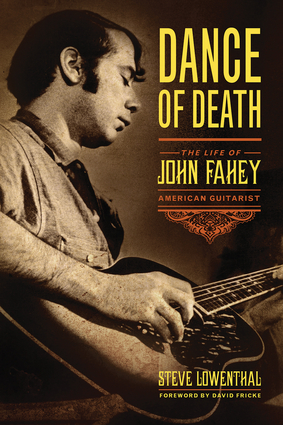
Read More
- Administrator
- Albums and Singles
Recorded in Madrid and Rome during 2013, this is the new album by the influential electronic duo ranked as industrial music pioneers. Ultraphoon is a leap ahead as for production and sound quality, with a stunning and brutal outcome, richly detailed nonetheless. Rhythms, noises and processed voices from different sources come together in hypnotic –bordering on trance– soundscapes along the lines of previous releases such as Pulsión (2009) and Desarrollos Geométricos (2011). Most of the meticulous mastering process has been carried out by Francisco López, internationally renowned as one of the top sound art and experimental music personalities, giving a new twist to the usual Esplendor Geométrico sound.
More information can be found here and here.
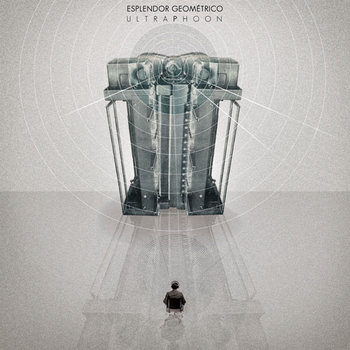
Read More
- Administrator
- Albums and Singles
Trouble is the brand new dispatch from the assorted output of Kevin Drumm and sits as one of the quietest in his entire catalogue. A single continuous 54-minute excursion into the netherworld of the audio spectrum, Trouble is neither ambient nor drone but a more complex investigation into the deep recesses of sound. One which discreetly works itself into the mind of a listener willing to invest in the path laid out in this extremely subtle, beautiful and exceptional release.
More information can be found here.

Read More
- Administrator
- Albums and Singles
Recorded with a multitude of collaborators in Europe, Japan, Australia and the USA, Quixotism presents the fruit of two years of work in the form of a single, LP-length piece in five parts. Ambarchi's work in recent years has evinced an increasing fascination with the possibilities of combining abstract sonic textures with rhythm and pulse, whether in his drumming with Keiji Haino, the subtly driving ride cymbals provided by drummer Joe Talia in their work together, or the motorik grooves of Sagittarian Domain (Editions Mego, 2012). Quixotism takes this aspect of Ambarchi's recent work to the next level: the entirety of this long-form work is built on a foundation of pulsing double-time electronic percussion provided by Thomas Brinkmann. Beginning as almost subliminal propulsion behind cavernous orchestral textures and John Tilbury’s delicate piano interjections, the percussive elements (elaborated on by Ambarchi and Matt Chamberlain) slowly inch into the foreground of the piece before suddenly breaking out into a polyrhythmic shuffle around the halfway mark, being joined by master Japanese tabla player U-zhaan for the piece’s final, beautiful, passages.
The pulse acts as thread leading the listener though a heterogeneous variety of acoustic spaces, from the concert hall in which the Icelandic Symphony Orchestra were recorded to the intimacy of Crys Cole's contact-mic textures. Ambarchi’s guitar itself ranges over this wide variety of acoustic spaces, from airless, clipped tones to swirling, reverberated fog. Within the complex web Ambarchi spins over the piece’s steadily pulsing foundation, elements approach and recede, appear and reappear, in a non-linear fashion, even as the piece plots an overall course from the grey, almost Nono-esque reverberated space of its opening section to the crisp foreground presence of Jim O’Rourke's synth and Evyind Kang’s strings in its final moments. Formally indebted to the side-long workouts of classic Cologne techno, the long-form works of composers such as Eliane Radigue, and the organic push and pull of improvised performance, Quixotism is constantly in motion, yet its transitions happen slowly and steadily, so that they are often nearly imperceptible, the diverse elements which make up the piece succeeding one another with the logic of a dream.
Anyone who follows Ambarchi's work knows that it has many facets: explorations of the outer limits of rock with Keiji Haino, psychoacoustic interference and sizzling harmonics in his solo performances, delicate improvisations with Keith Rowe or John Tilbury. To all these projects, Ambarchi brings his particular sensibility, patiently allowing sounds to develop on their own terms without forsaking their intrinsic physical and emotional power. Similarly, although Quixotism is shaped by its many contributors, the resulting sound world is unmistakably Ambarchi’s own. His most substantial solo release since Audience of One (Touch, 2012), Quixotism represents the summation of Ambarchi’s work over the last few years while also pointing to the future.
More information can be found here.

Read More
- Administrator
- Albums and Singles
Ashley Paul's Heat Source was recorded during a challenging year of transience between New York and London. During this year of impermanence Paul performed regularly and the effects of frequent performance and traveling can be heard in the intentionally pared back emptiness of Heat Source. making it an emotionally challenging and fascinatingly personal listening experience.
Heat Source finds Ashley Paul working using her brilliant ears to find a zen like balance between her voice and a sparse arrangement of staccato instrumentation leaving as much open space on one song as most people would create in a lifetime. This open space isn't empty, however, but it's up to you to fill in the meaning. Heat Source is an emotionally challenging and fascinatingly personal listening experience that creates a powerful pace.
Ashley Paul is a performer and composer based in Brooklyn, New York. She uses an array of instruments including saxophone, clarinet, voice, guitar, bells and percussion, mixing disparate elements to create a colorful palate of sound that works its way into her intuitive songs; free forming, introverted melodies. This blend manifests beautiful and simple musical forms against acoustic experimentation. Her solo albums have received high praise being chosen in Wire Magazine's "Top 18 Releases of 2013," Pitchfork "Best Experimental sounds of 2013", first on Byron Coley and Thurston Moore's "Tongue Top Ten" in Arthur Magazine and included on NPR's All Songs Considered "Best of 2010". She has been interviewed or featured in Wire Magazine, BOMB, Gonzo (circus), Dummy, The Quietus, Ad Hoc, Spex, The Sound Projector and Foxy Digitalis.
Ashley has performed or recorded with Phill Niblock, Rashad Becker, Nik Colk Void, Loren Connors, Aki Onda, C. Spencer Yeh, Anthony Coleman, Joe Maneri, Joe Morris, Seijiro Murayama, Greg Kelley, Bill Nace and Eli Keszler appearing on such labels as PAN, ESP-DISK' and Tzadik. She received a Masters of Music from New England.
Out October 27th.
More information will eventually be available here.

Read More
- Administrator
- Albums and Singles
One of the most intriguing artists on the Hospital Productions roster, Lussuria came to prominence with the release of three tapes as part of the American Babylon series in 2012 which were eventually compiled into a double vinyl edition last year. His opiated atmospheres brought together the ritualistic appeal of late '70s and early '80s Italian industrial music crossed with the claustrophobia of early material from The Cure and the decadent, voyeuristic compulsion of Pasolini flicks so enamoured by Coil.
Having been in the works through late 2013 and in post-production for several months since, Industriale Illuminato is in some respects the first release by Lussuria conceived as a standalone album, and is perhaps his most unique, unsettling body of work to date. Inspired by Deconstructionism and an overriding sense of anxiety, the album revolves around the dislocated narrative of album opener "Boneblack," a dense and evocative fade into shadowy realms inspired by composer Giacinto Scelsi and the enigmatic mind-tricks of Alain Resnais' Last Year at Marienbad.
More information can be found here.
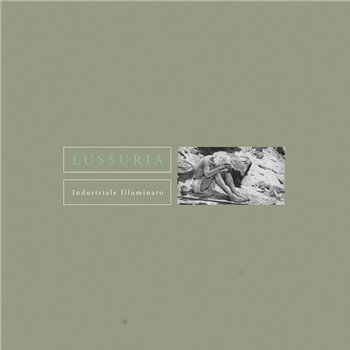
Read More
- Administrator
- Albums and Singles
Following up from the success of his emphatic PAN releases Dutch Tvashar Plumes and Diversions 1994-1996 in 2012, we are excited to announce ‘KOCH’ (pronounced "cotch"), the new album from London's Lee Gamble.
Sharing some stylistic affinity with his previous records, which excavated his deeply personal history with UK jungle and rave, and techno, this new work dives even deeper to reveal a singular and intimate musical vantage point, shifting to approaching music as projection, state, hallucination, an other place. In Koch, we experience an artist constructing a future after time spent deconstructing the past.
In the music we witness such dimensional abstraction, zooming between epic macro scenery and claustrophobically close detail, disorientation and absolute focus. Rhythms fuse together and phase apart, club tracks tunnel into an anxious wilderness, with themes and textures emerging as threads throughout the record, wormholing between each track.
There is a sense of the seen and the unseen, an honest tension between music as function (for this world) and as artistic exploration (for another world) as cracks in the surface appear to reveal the odd and alien minutiae within. Koch represents an intimate and revelatory new phase in Lee Gamble's practice. Producing tracks that can live and grow on their own in a club or personal listening environment, the artist's exploratory framework creates threads of consistency and tension between disparate spaces, locations, and mental states.
More information can be found here.

Read More
- Administrator
- Albums and Singles
The culmination of four years writing and editing, Anjou marks the first collaboration between Labradford's Robert Donne and Mark Nelson since the release of that group's fixed:context LP.
Combining modular synthesis, Max/MSP programming and live instrumentation, Anjou deftly weaves noise with gentle ambience and melody with texture.
Guitar, bass and Steven Hess' (Locrian, Fennesz, Pan American) live percussion give the eight pieces an immediacy and create a framework for the more abstract sounds of digital and analog synth programming.
The product of twenty-plus years of friendship, Anjou is refined and challenging.
An extension of the Labradford sound-world but no mere victory lap, Anjou represents Donne and Nelson stepping out and forward, their eyes firmly focusing on the future.
More information can be found here.

Read More
- Administrator
- Albums and Singles
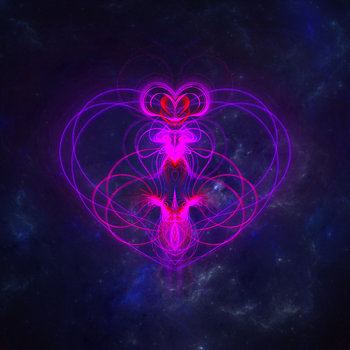
The creatures who frolic in the Chemical Playschool have again escaped their test-tubes, and hell, this time they have gone too damn far...
Recorded from May through July 2014 at The Dolls' House, London and The Silver Studio in Nijmegen. Mastered by Ray.
Edward Ka-Spel, The Silverman, Erik Drost., Raymond Steeg...Cover Art by Anita Hammer.
More information can be found here.
Read More
- Administrator
- Albums and Singles

"I've known Nathan for many years and we've played shows and made records together, so I know his thing - hushed, reaching vocals weaving an often melancholic impression over sparse guitar and ambient backdrop. As the opening song ("Reinforced/Delicate") stumbles in, carrying that familiar weight, I thought I knew what was coming, but I was wrong. By the first two lines of "Into the Night", the second song, I had to sit down because if the rest of the record was going to be like this, I knew I wanted to be there with it. To my delight, it did not let up - every song a relentless epiphany, the ragged edge of emotional, even physical, abandon. Timeless songs like "My Favorite Drug is Sleep" and "I was Once a Handsome Man" careen into the more artful/obtuse textures even thru the sprawling electric tribute of "Ride on, Molina." This is what happens when someone with a truly unique vision sticks to their guns and proves it."
- Alan Sparhawk, Low
Out September 23rd. More information can be found here.
Read More
- Administrator
- Albums and Singles
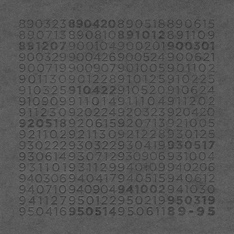 Between 1989 and 1995, Rudolf Eb.er (Runzelstirn & Gurgelstock) and Joke Lanz (Sudden Infant) had a monthly radio show for Switzerland’s 104.5 FM station. Titled Psychic Rally Transmission, each show was an improvised live performance, mixing found tapes, random household instruments and other items, that helped to define the then-nascent Schimpfluch-Gruppe. Aggressive industrial, punky outbursts, and a healthy dose of absurdity pepper the ten complete shows presented in this box.
Between 1989 and 1995, Rudolf Eb.er (Runzelstirn & Gurgelstock) and Joke Lanz (Sudden Infant) had a monthly radio show for Switzerland’s 104.5 FM station. Titled Psychic Rally Transmission, each show was an improvised live performance, mixing found tapes, random household instruments and other items, that helped to define the then-nascent Schimpfluch-Gruppe. Aggressive industrial, punky outbursts, and a healthy dose of absurdity pepper the ten complete shows presented in this box.
The duo's penchant for Dada inspired absurdity is what makes up the core of Psychic Rally Transmission.Right from the animal like noises and a questionable karaoke performance of Air Supply’s "The One That You Love" that open the first show, it was clear that the mood was going to be more bizarre than intense.Tapes of random discussions, TV show advertisements and phone calls spring up throughout, keeping the material extremely chaotic.Some of the shows do show a sort of theme or commonality within them, but even in those, the duo barely sit still.
With each single show clocking in at 60-75 minutes and taking up a whole disc each, there is quite a bit of material to listen through, material that at times is intentionally grating and challenging.Tape loops that go on too long, intentionally painful feedback and so forth make for difficult listening.However, it is one of those situations where the warts add greatly to the whole package.
Being a radio show, the duo occasionally play records from other artists, albeit with a significant amount of effects and processing.Early Whitehouse and Public Image Ltd.'s "Cowboy Song" end up represented, and an abridged playing of Genocide Organ's "Mind Control," paired with chintzy dance beats, works brilliantly.Random bits of German drinking songs, kids music, and some folk stuff all show up at some point, the last three shows especially showcasing a lot of the beer hall material.
Less discernible music also springs up throughout, and given its ragged, lo-fi sound, I assume a lot of it may be Lanz or Eb.er’s own work in studio or via pre-recorded cassettes.Punk rock outbursts from the March 1 1990 show instantly made me think of when Sudden Infant have gone in that direction, and the improvised percussion and guttural sounds from May 18 1992’s show are all R&G's organic body horror collage.
The in-studio performances range from standard harsh noise elements, such as the feedback and drones of April 22 1991's show, which is perhaps the most focused single disc here.Tapes and random effects spring up, but on the whole it stays a consistent harsh noise work.On May 17, 1993, cheap electronic noises and beat boxes eventually give way to distorted, harsh industrial rhythms that is no more pleasant in a conventional sense, but extremely enjoyable.
Ten hours of cut up tapes, weird found music, and studio improvised noise recordings ensure this set may not be the most accessible package.However, the material contained within are perfect examples of the material the members of the loosely defined Schimpfluch-Gruppe have been releasing over the past 25 plus years.Anyone who is familiar with Lanz and Eb.er's work will find much to love on here, in a format that benefits from its mostly unedited and spontaneous nature.
samples:
 
Read More